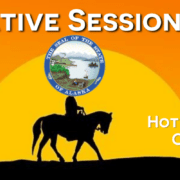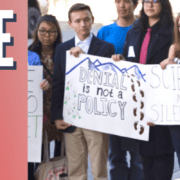The Governor’s Election Ahead – Our Endorsement
After an in-depth process, The Alaska Center Board of Directors has unanimously voted to endorse the Les Gara and Jessica Cook Gubernatorial ticket and encourages voters to rank the Bill Walker and Heidi Drygas ticket second.
The Gara/Cook campaign stands by The Alaska Center values 100%. Les Gara has a strong track record of being a clean air and water champion, healthy communities, and a strong democracy. This campaign has a vision for Alaska we want to be in and the leadership skills to get the job done. This endorsement decision was not a difficult one.
In a ranked-choice voting environment, voters must rank multiple candidates to give us the best chance to defeat Governor Dunleavy in this election.
More On Our Endorsement
While Governor Walker may not share every policy goal of ours, we know that he would do right by Alaskans in restoring civil leadership to the administration that recognizes the urgency of the climate crisis. We encourage voters to rank the Walker/Drygas ticket second.
The stakes in this election are incredibly high: we need to oust Governor Dunleavy. Dunleavy has orchestrated a budget crisis that threatens our communities. He has been a puppet for Pebble Mine and supported conspiracy theories that sow doubts in our election system. He has even attempted to gut our Automatic Voter Registration and waste millions of dollars of our dwindling state resources in supporting countless frivolous lawsuits, sweetheart contracts, and more. It is time for Dunleavy to go.
Alaskans deserve leadership that has a vision for a thriving, just, and sustainable future. These candidates can bring our state back on track and can pave a new path forward to a sustainable, renewable, and viable Alaska that works for All Alaskans.
I hope you join me in ranking Les Gara and Jessica Cook first, and Governor Walker and Heidi Drygas second!










